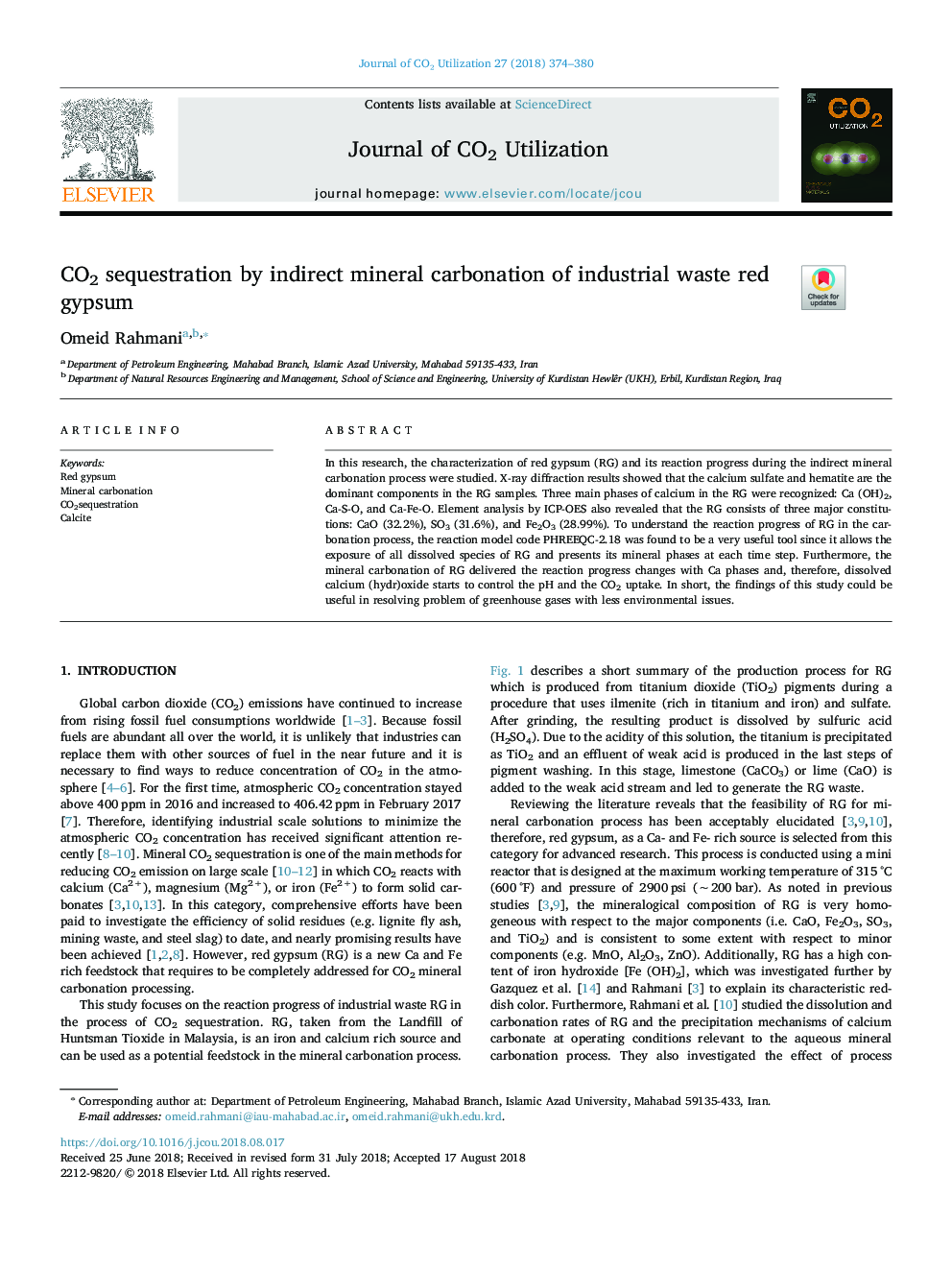| Article ID | Journal | Published Year | Pages | File Type |
|---|---|---|---|---|
| 10999946 | Journal of CO2 Utilization | 2018 | 7 Pages |
Abstract
In this research, the characterization of red gypsum (RG) and its reaction progress during the indirect mineral carbonation process were studied. X-ray diffraction results showed that the calcium sulfate and hematite are the dominant components in the RG samples. Three main phases of calcium in the RG were recognized: Ca (OH)2, Ca-S-O, and Ca-Fe-O. Element analysis by ICP-OES also revealed that the RG consists of three major constitutions: CaO (32.2%), SO3 (31.6%), and Fe2O3 (28.99%). To understand the reaction progress of RG in the carbonation process, the reaction model code PHREEQC-2.18 was found to be a very useful tool since it allows the exposure of all dissolved species of RG and presents its mineral phases at each time step. Furthermore, the mineral carbonation of RG delivered the reaction progress changes with Ca phases and, therefore, dissolved calcium (hydr)oxide starts to control the pH and the CO2 uptake. In short, the findings of this study could be useful in resolving problem of greenhouse gases with less environmental issues.
Keywords
Related Topics
Physical Sciences and Engineering
Chemical Engineering
Catalysis
Authors
Omeid Rahmani,
